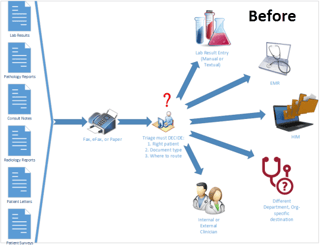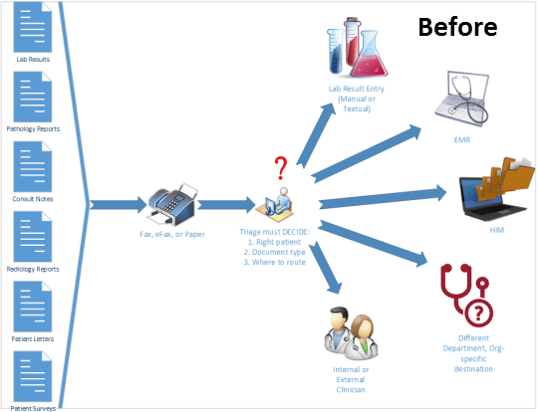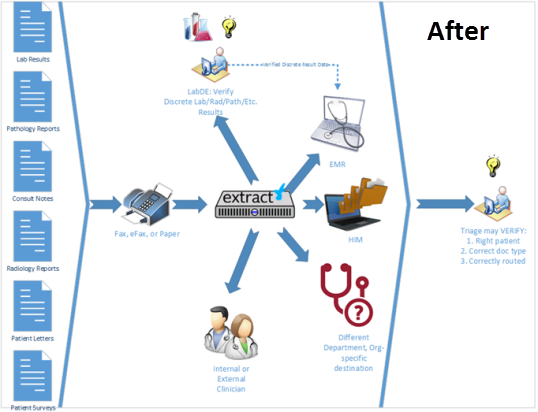Do you frequently find yourself searching for and routing documents, whether paper or electronic, to colleagues, care team members or departments that need them? Or, worse do you find yourself waiting for documents to be routed to you? In our work, helping hospitals to automate clinical data abstraction, we're struck by the hours of time lost each day to inefficient workflows involving "loose" records that we often find ourselves helping our customers extract data from.

These are routine tasks that you may not even be aware of because they are taken for granted as "the way we've always done it."
One such example is monitoring the incoming fax folder for a report you've requested from another provider and then printing it or e-mailing it to the expectant and often impatient clinician. In cases where the document is urgent, we've witnessed staffers take time to walk it over to the physician.
While it's necessary to do this to ensure patients aren't put at risk by delays, it's not necessary to rely on valuable human capital to do it. And while it may not seem like a big deal in the moment, minutes spent on these tasks add up to hours when multiplied by their daily frequency for every team member impacted and by every hospital department where this occurs.
To get a better understanding of what we're describing, look at the following workflow diagrams depicting an example workflow before and after intelligent clinical document classification and routing is implemented.


Imagine the hours that could be saved clinical staff that no longer need to stop by the fax or scroll through the “efax” folder to find items. Based on content in the documents and document classification rules defined ahead of time, documents are instead immediately routed to physicians, labeled correctly, linked to the proper electronic medical record, and then routed to other workflows such as data abstraction — which can be automated too!
Before intelligent clinical document classification, staff members spend valuable doing a task that a machine can do faster, which becomes a bottleneck that slows down patient care.
If you're interested to learn how your organization can reallocate time lost to inefficient "loose" medical record workflows to more valuable and critical activities that require a human brain to solve click on the button below.